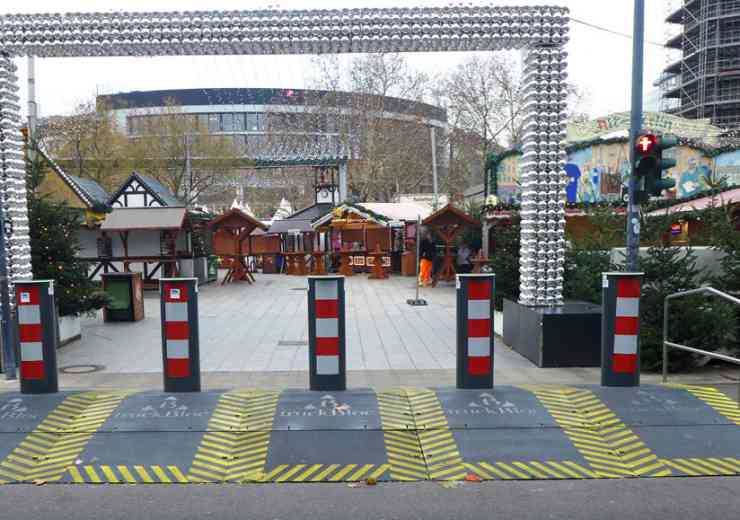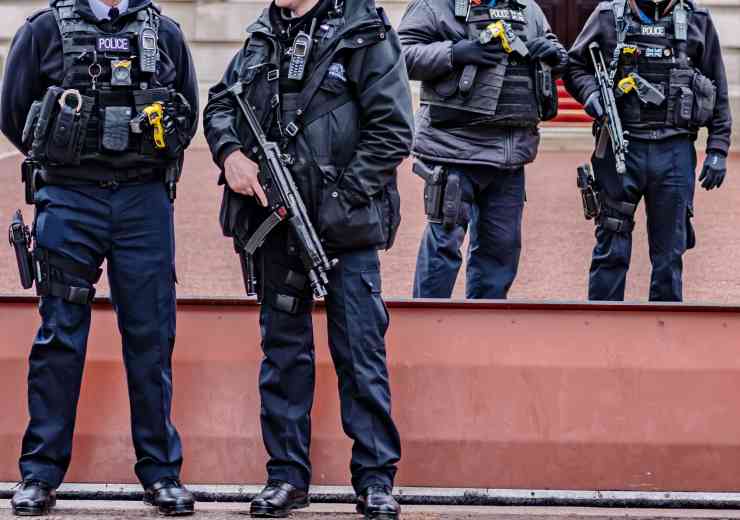A failure to connect the dots
 When an Al-Qaeda militant, Abdullah Hassan Tali’ al-Asiri, blew himself up in the Jeddah office of Saudi Arabian Deputy Interior Minister, Prince Mohammed bin Nayef, back in August of last year, the incident rattled counter-terrorism officials globally. Here was a militant on Saudi’s most wanted list who, by subterfuge, had gained access to one of the most protected men in the Kingdom and attempted to assassinate him with an improvised explosive device.
When an Al-Qaeda militant, Abdullah Hassan Tali’ al-Asiri, blew himself up in the Jeddah office of Saudi Arabian Deputy Interior Minister, Prince Mohammed bin Nayef, back in August of last year, the incident rattled counter-terrorism officials globally. Here was a militant on Saudi’s most wanted list who, by subterfuge, had gained access to one of the most protected men in the Kingdom and attempted to assassinate him with an improvised explosive device.
Initial reports of the attack were sketchy at best. They pointed to al-Asiri having passed through security at two airports and being in custody for some 30 hours en-route to repent in person to the Prince for past crimes, but whilst carrying an explosive device subsequently detonated remotely and just moments after al-Asiri was ushered in to meet with the Prince.
Finding answers
Naturally, the global counter-terrorism community wanted fast answers. Within a week a high level US delegation, headed by White House Homeland Security Advisor John Brennan, met with Saudi officials and the slightly injured Prince himself, to discuss the attempted assassination and offer assistance in the major investigation by then on-going.
That visit kick-started close cooperation between US and Saudi officials on the investigation into both the mechanics and forensics of the attack and by the end of September a clearer picture began to build up.
A rapidly compiled report examined the incident through the looking glass of strategic threats to U.S. assets within Saudi Arabia and the wider Middle East, but doesn’t appear to have examined in any great detail the potential for further similar attacks elsewhere. It identified by forensic examination that al-Asiri had not concealed the explosive device in a body cavity as first thought, but that it had been concealed in his underwear. The report apparently concluded that this was merely an attempt on the life of a prominent Al-Qaeda adversary heading a vigorous campaign to neuter the terrorist organisation within Saudi Arabia and did not represent a significant threat in the wider world.
The report, as well as other salient information gathered during the course of the investigation, is understood to have been distributed widely amongst intelligence and counter-terrorism officials.
Clearly therefore the incident didn’t gather as much traction outside of the Kingdom of Saudi Arabia and the wider Middle East as perhaps it deserved. It has been alleged that key facts in the case were either dismissed as irrelevant, overlooked in their entirety or played down to the extent their import was lost.
One might have assumed that given al-Asira apparently passed through multiple airport security checks in airports en-route to meet with the Prince and whilst carrying an explosive device, that information would have been enough to start alarm bells ringing and prompt an immediate hardening of security measures at civil airports across the globe.
No such warning appears to have been given.
Another attempt
Thus, another Al-Qaeda militant, Umar Farouk Abdulmutallab, circumvented security at two major airports and attempted to blow himself up aboard Northwest Airlines flight NWA 253, as the the aircraft descended toward Detroit Metropolitan Airport on Christmas Day.
Similarities between the two cases are stark.
An investigation into Abdulmutallab’s failed attack has already revealed that the two men belonged to the same terrorist faction, Al-Qaeda in the Arabian Peninsula (AQAP). Furthermore, the devices they were carrying were concealed in underwear and both contained the high explosive Pentaerythritol Tetranitrate (PETN).
Whilst there is no evidence to suggest the two men knew one another presently, there is ample evidence suggesting the group they belonged to possesses the technical and manpower capability to strike where it sees fit and is not necessarily the spent force we have been led to believe.
Brennan was forced to defend the indefensible in relation to actions taken following the attempt on the Saudi Deputy Interior Minister’s life.
Questioned intensively by reporters and others about similarities between the two cases and why warning was not given to the aviation community, he has argued vociferously that while information was disseminated widely there was “no indication at the time that there would be an attempt against an airliner.”
Failure to focus
A White House review of the Christmas Day attempted airliner bombing has concluded that by concentrating on the strategic threat posed by the al-Qaeda affiliate in Yemen and its plans for attacking U.S. targets there, intelligence agencies failed to focus on the group’s preparations for a direct strike in the U.S. itself.
“That lapse, along with insufficient attention to separate warnings that a specific person may have been recruited by extremists in Yemen, led to a breakdown in systems designed to connect the dots about an imminent threat to the homeland,” President Obama has stated.
“The U.S. government had the information to potentially uncover this plot and disrupt the attack,” he said. “Rather than a failure to collect or share intelligence, this was a failure to connect and understand the intelligence that we already had.”
A six page declassified report released by the White House, singled out the National Counter-Terrorism Centre (NCCT) and the Central Intelligence Agency (CIA) for greatest criticism. The NCTC was created after the Sept. 11, 2001, attacks to analyse terrorism-related intelligence from across the government, while the CIA retains additional responsibility for counter-terrorism analysis. “The intentional redundancy in the system should have added an additional layer of protection in uncovering a plot like the failed attack on December 25,” the report said.
Each failed to apply to Yemen-based al-Qaeda in the Arabian Peninsula (AQAP) “the full range of analytic tools and expertise that [they use] in tracking other plots aimed at the U.S. Homeland,” it added.
Amongst the information held by the U.S. at the time Umar Farouk Abdulmutallab boarded the first of the airliners en-route to Detroit, was a Central Intelligence Agency (CIA) biographical study of the bomber prepared after his father had tipped off Nigerian and U.S. intelligence about his son’s radicalism, but not disseminated outside the agency. Separately, the National Security Agency (NSA) possessed electronic intercepts from the Yemen pointing to an anti-U.S. plot and an unnamed Nigerian. The State Department, failed to notify other relevant agencies that Abdulmutallab had a valid U.S. entry visa.
History has a nasty habit of repeating itself when least expected or wanted. September 11 horrifically demonstrated that failure to properly address domestic security can have disastrous consequences. In focusing again rather too closely on threats to external assets, it is fair to say that the U.S. government has been guilty of believing rather too much in its rhetoric on the domestic security question. December 25 very nearly brought with it similar horror in the American homeland.
A major security lapse
President Obama has characterised the incident as a failure to connect the dots, directly resulting in Umar Farouk Abdulmutallab being able to board flights unhindered and reach his intended target. The incident more fundamentally speaks to significant complacency within the agencies tasked to positively identify and interdict individuals with apparent intent.
The failure in first linking these two incidents and subsequently connecting the dots to develop a picture of intent; underscore a long held belief in some circles that the further one moves away from the last major incident so the capability to meet current and future threats dissipates with the passage of time.
That the airline appears to have been radicalised in London, though significantly downplayed by the U.K. government, has not gone without notice.
Whilst nobody has yet publicly accused this country of taking its eye of the ball in respect of Abdulmutallab, a prescient report published in early February by the influential Home Affairs Committee has come close, by calling into question the country’s counter-terrorism strategy in its entirety.
The report accuses the government of “institutional inertia” over terrorism, charging that “a lack of political will has hindered the institution of valuable reforms such as regional policing counter-terrorism units; and that those involved in counter-terrorism may be willing to settle for existing sub-optimal solutions, rather than pro-actively reforming to meet ever-changing threats.”
It goes on to say that “while the structures now in place may be suitable for combating the terrorist threat as currently constituted, committee members are not confident that government institutions have the desire to constantly adapt.”
Such damning commentary from a highly regarded committee at the very heart of government has not, as one might expect, been received well within the corridors of power in and around Whitehall.
Alan Johnson, the Home Secretary, has been vociferous in his condemnation, calling the report “inadequate” and “wholly inaccurate”. Nevertheless, there are those who privately agree with the analysis and most particularly in respect to a lack of political will contributing to the institutional inertia.
Following Umar Farouk Abdulmutallab’s attempt to blow up Northwest Airlines flight NWA 253, whilst it was in the descent to Detroit Metropolitan Airport, governments on both sides of the Atlantic Ocean have clearly been grappling to find answers as to why another very nearly catastrophic terrorist attack on home shores occurred, as well as plug the holes in a deeply flawed security regime that allowed him to come close to succeeding.
Whether the measures that are now being put in place in numerous different areas are sufficiently robust to fulfil the promise that such an event will not be allowed to happen again remains to be seen.
digital issue




















